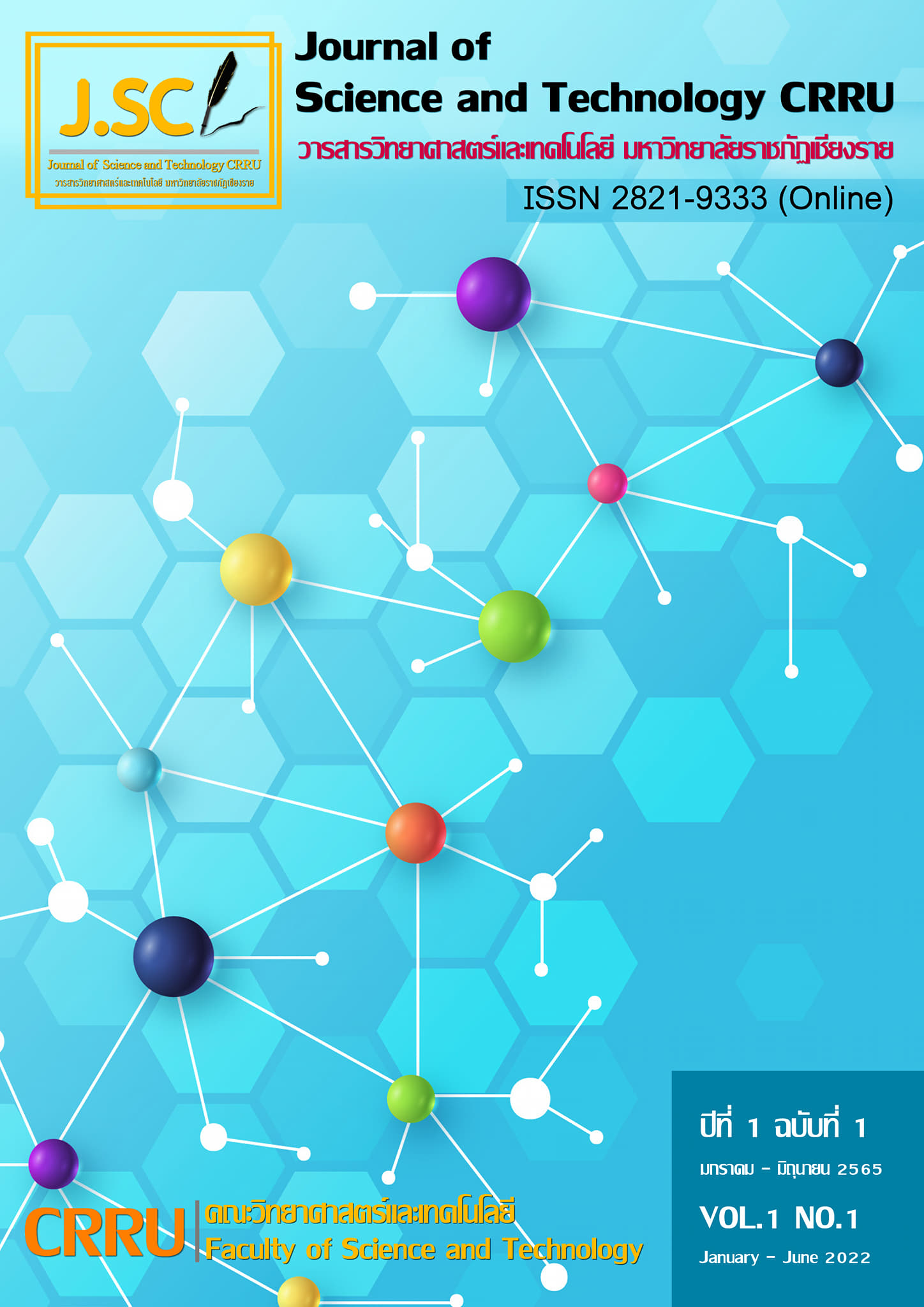The Effect of Cassava Starch on Physicochemical Properties and Sensory Attribute of Fish Bar Product from Snakehead Fish in Sing Buri Province
Main Article Content
Abstract
The objective of this research was to study the effect of cassava starch on physicochemical properties and sensory attribute of fish bar product from snakehead fish in Sing Buri province. The content of cassava starch was studied at 5, 15, 25 and 35% of fish weight. It was found that increasing cassava starch resulted increase the L*, a* and b* colors of product but water activity and moisture content were reduced. The product containing cassava starch 35% of fish weight had the least values of water activity and moisture content (p≤0.05). Increasing cassava starch resulted increase hardness, gumminess and chewiness but decrease springiness and resilience. The product containing cassava starch 35% of fish weight had the highest values of hardness, gumminess and chewiness, and had the less values of springiness and resilience (p≤0.05). Increasing cassava starch resulted decrease the consumer liking scores of appearance, color, taste, texture and overall liking. The appropriate amount of cassava starch added to the fish bar product from snakehead fish in Sing Buri province was 15% of fish weight. The product had color values of L*, a* and b* were 51.94, 0.23, 10.43 respectively, water activity content was 0.95, moisture content 36.84%. The texture properties of product such as hardness, springiness, cohesiveness, gumminess, chewiness and resilience were 18,196.02 g., 0.97, 0.87, 8,598.23, 9,826.74 and 0.42, respectively. Consumers rate their product preference in term of appearance, color, taste and overall liking in moderately like level (7.30-7.87 scores).
Article Details

This work is licensed under a Creative Commons Attribution-NonCommercial-NoDerivatives 4.0 International License.
Journal of TCI is licensed under a Creative Commons Attribution-NonCommercial-NoDerivatives 4.0 International (CC BY-NC-ND 4.0)
References
อรวรรณ แท่งทอง. (2561). การพัฒนาระบบสารสนเทศด้านการตลาดเพื่อส่งเสริมผลิตภัณฑ์จากปลาช่อนแม่ลาอำเภอบางระจัน จังหวัดสิงห์บุรี. วารสารสถาบันวิจัยและพัฒนา มหาวิทยาลัยราชภัฏมหาสารคาม, 5(2), 253-266.
ศิริลักษณ์ รอตยันต์. ฮือก๊วย. (2554). ก๋วยเตี๋ยวลูกชิ้นปลา และเย็นตาโฟ. กรุงเทพมหานคร: สำนักพิมพ์แสงแดด.
กล้าณรงค์ ศรีรอต และเกื้อกูล ปิยะจอมขวัญ. (2561). เทคโนโลยีของแป้ง. กรุงเทพมหานคร: สำนักพิมพ์มหาวิทยาลัยเกษตรศาสตร์.
Kim, J. M., & Lee, C. M., (1987). Effect of starch of textural properties of surimi gel. Journal of Food Science, 59, 1002-1008.
ไพโรจน์ วิริยจารี. (2545). การประเมินทางประสาทสัมผัส (Sensory Evaluation) (พิมพ์ครั้งที่1). เชียงใหม่ : มหาวิทยาลัยเชียงใหม่.
ศิริบุญ พูลสวัสดิ์. (2540). ศึกษาความเปลี่ยนแปลงของค่าวอเตอร์แอคติวิตีในระหว่างการเก็บผลไม้แห้ง. กรมวิทยาศาสตร์บริการ, 1-45.
Sugitha, I. M., Suparthana, I. P., and Samanta, P. N., (2019). Fish and seaweed (Eucheuma cotonii) meatball for reducing constipation effect. In AIP Conference Proceedings, 2155(020057), 1-7.
Hizukuri, S., (1988). Recent advances on molecular structure of starch. Journal of Japan Society Starch Science, 31, 185.
สุภางค์ เรืองฉาย. (2552). การพัฒนาและการศึกษาอายุการเก็บรักษาลูกชิ้นหมูผสมเห็ดหอม. วารสารวิชาการ มหาวิทยาลัยหอการค้าไทย, 29(3), 84-101.
อรทัย เปี่ยมปรีดา และ จิราพร รุ่งเลิศเกรียงไกร. (2549). การผลิตลูกชิ้นปลาจากเนื้อปลาสองชนิด.วารสารวิจัยและพัฒนา มหาวิทยาลัยเกษตรศาสตร์, 33(1), 35-44.


